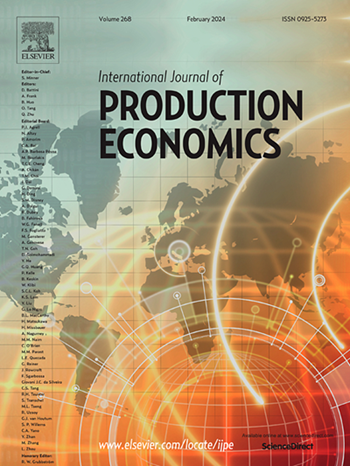Product and price competition with selection of unique and common features and different quality levels
IF 10
1区 工程技术
Q1 ENGINEERING, INDUSTRIAL
引用次数: 0
Abstract
Firms must determine the best features and prices for their new products to be competitive in the market. We consider product features that are discrete and can have different quality levels. We formulate and solve the two competing firms’ new product introduction and pricing problems, in which both firms introduce their products sequentially. We differentiate unique features that are present only in one product and common features that are shared between two products. The firms’ new product introduction problem is formulated as a mixed-integer nonlinear program, and the firms’ pricing problem is formulated as a nonlinear program. These formulations allow a firm to determine the optimal features and the price in a competitive setting with general product value and cost functions. For linear product value and cost functions and a demand function linear in price but nonlinear in the number of features or the feature quality level selected, we analytically determine the firms’ optimal feature and quality level selection in anticipation of the features and the quality levels of the competitor’s product and the resulting equilibrium prices. The optimal selection of unique features depends only on the value and cost of that feature’s quality levels and the firms’ price sensitivities. A firm with a competitive advantage tends to include more features or high-quality feature levels in its products; otherwise, it differentiates its product via feature selection to lessen the substitution effects of common features. We identify cases where, despite the firms being symmetric other than their entry order, the leader’s optimal feature selection is introducing a product with fewer or lower quality features compared to the second firm. Despite this, the leader still obtains a higher profit than the second firm.
产品与价格竞争具有选择的独特性和共性以及不同的质量水平
公司必须确定其新产品在市场上具有竞争力的最佳特性和价格。我们考虑的产品功能是离散的,可以有不同的质量水平。我们制定并解决了两家竞争企业的新产品引进和定价问题,其中两家企业依次推出各自的产品。我们区分只存在于一个产品中的独特功能和两个产品之间共享的共同功能。将企业新产品引进问题表述为一个混合整数非线性规划,将企业定价问题表述为一个非线性规划。这些公式使企业能够在具有一般产品价值和成本函数的竞争环境中确定最优特性和价格。对于线性产品价值和成本函数,以及价格线性但特征数量或特征质量水平选择非线性的需求函数,我们在预期竞争对手产品的特征和质量水平以及由此产生的均衡价格的情况下,分析确定了企业的最优特征和质量水平选择。独特功能的最佳选择仅取决于该功能的质量水平的价值和成本以及公司的价格敏感性。具有竞争优势的企业倾向于在其产品中包含更多的功能或高质量的功能水平;通过特征选择来区分产品,减少共同特征的替代效应。我们确定了这样的情况,尽管公司的进入顺序是对称的,但领导者的最优特征选择是引入比第二家公司质量更少或更低的产品。尽管如此,领先者仍然比第二家公司获得更高的利润。
本文章由计算机程序翻译,如有差异,请以英文原文为准。
求助全文
约1分钟内获得全文
求助全文
来源期刊
CiteScore
21.40
自引率
7.50%
发文量
266
审稿时长
52 days
期刊介绍:
The International Journal of Production Economics focuses on the interface between engineering and management. It covers all aspects of manufacturing and process industries, as well as production in general. The journal is interdisciplinary, considering activities throughout the product life cycle and material flow cycle. It aims to disseminate knowledge for improving industrial practice and strengthening the theoretical base for decision making. The journal serves as a forum for exchanging ideas and presenting new developments in theory and application, combining academic standards with practical value for industrial applications.

 求助内容:
求助内容: 应助结果提醒方式:
应助结果提醒方式:


